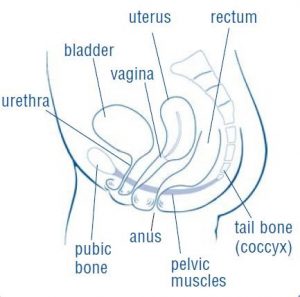Why biofeedback and Kegel exercises?
Patients with pelvic floor weakness or constipation issues related to difficulty with evacuation can benefit from pelvic floor strengthening and rehabilitation. Pelvic floor conditions can be congenital (you are born with) or acquired. The most common cause of pelvic floor disorders is obstetrical injuries during childbirth. Incontinence (the loss of stool control) can affect 1 in 10 people. It is more common in women but can occur in men. Other causes include prior anal operations, diabetes, neurologic conditions, or aging. Difficulty with evacuation is seen in any age group. Often the patient has constipation with prolonged or repetitive sitting on the toilet to evacuate. The two common forms of pelvic floor rehabilitation are biofeedback and Kegel exercises.
What is biofeedback?
Biofeedback for the pelvic floor is a treatment to help you strengthen or relax the pelvic muscles in order to improve bowel or bladder control, to decrease pelvic pain, and to help coordinate the pelvic muscles to improve defecation problems. The therapy is done in the office by a nurse or a physical therapist. If Dr. Maher Abbas feels that biofeedback can be helpful for your condition, you will be referred to the appropriate facility. Biofeedback requires several sessions, typically spaced every few days or weekly for 30 to 60 minutes. Your therapist will inform you of your own regimen based on the type and severity of your condition. During each treatment session, sensors maybe placed externally on the skin of the abdomen and anus to provide you with visual feedback on how well you are training and coordinating your muscles. In some cases, a plug like probe is inserted inside the anus or vagina. As you tighten or relax your muscles, changes are seen on a computer screen or monitor. You therapist will tell you what is best for you. Additional daily therapy can be prescribed at home and in some instances a portable home unit can be dispensed for you to perform the therapy at home.
What are Kegel exercises?
Kegel exercises are a set of simple training maneuvers that can help you strengthen and relax the pelvic muscles. The pelvic muscles form the bottom part of the pelvis and run from the pubic bone in the front to the tailbone in the back [Figure 1]. They support surrounding pelvic organs such as the vagina, bladder, and the rectum. Strong pelvic muscles help keep your pelvic organs in shape and improve bladder and anorectal muscles function. Kegel exercises help you tighten these muscles. They can be done during pregnancy, after childbirth, after anal surgery, or if you are experiencing pelvic weakness for any reason. When you start doing these exercises it maybe difficult to know if you are engaging the correct muscles. Like going to the gym to build upper or lower body muscles, you need to perform these exercises regularly to see whether they can help you. The best way to think of these exercises is to think of an eye wink. Try to tighten your anus (like a wink) and then relax the wink. If you are a woman, you can do the same with the vaginal muscles.

Figure 1 – Pelvic organs and muscles
Kegel exercises can be done with you sitting, squatting, or resting on your back. Or you can alternate positions on a weekly basis. Numerous resources are available on the internet. The following are instructions you can follow if you have incontinence:
- Tighten the pelvic muscles and hold for 3 seconds. Relax them slowly for 3 seconds
- Repeat 10 times. You may gradually increase the hold to 5 to 10 seconds and relax for 5 to 10 seconds (every few days, you can increase)
- Tighten the pelvic muscles quick and strong. Relax the pelvic muscles. Repeat 10 times
- If you have urine incontinence in addition to stool incontinence, tighten the pelvic muscles and cough while holding the contraction. Relax. Repeat 10 times (If at first you leak with coughing, do not be discouraged)
- Tighten the pelvic muscles and stand up while holding the contraction. Now tighten the pelvic muscles again and sit down slowly while holding the contraction. Relax
- Do not hold your breath. Instead, breathe out while tightening your pelvic muscles
- Do not push down like you are having a bowel movement
- Place your hand on the lower part of your belly to make sure it stays flat when you exercise
- Do not tighten your buttocks or leg muscles while you perform the exercises. Try to focus on anal and vaginal muscles
- Perform these exercises daily in the morning and evening
How long do you need to undergo pelvic floor rehabilitation?
In order to notice a significant improvement, a minimum of 1 month is needed. For most patients, pelvic floor retraining requires 3 months for optimal effect. However, if you do not notice any improvement at 1 month, it is unlikely that additional therapy will help. Dr. Maher Abbas can recommend a different treatment if this therapy does not help you. Some patients need periodic retraining as needed if the effect of the therapy is lost over time.
Any questions? Contact Dr. Maher A. Abbas’ office nurse here!
